Development Division
Industrial Power Products Business
YANMAR POWER TECHNOLOGY CO., LTD.
YANMAR Technical Review
Development of New Diesel Engine 4TN107 for Off-Road Machinery: Achievement of Class-Leading Fuel Efficiency and High Power Density
Abstract
Yanmar has developed the new 4TN107 series of 4.6 L diesel engines with power outputs up to 155 kW. The new engines provide customers of medium and large off-road machinery with low environmental impact, high performance, and reliable toughness, also complying with EU Stage V and other developed-nation emission regulations.
Class-leading fuel consumption is achieved through the development of a new combustion chamber, use of advanced fuel injection system components, and friction reduction. Class-leading power density of 34 kW/L together with good drivability is likewise achieved through the adoption of two-stage turbocharging.
The designs of the cylinder head and cylinder block draw on Yanmar’s expertise with large and powerful marine engines to ensure that this high power density also comes with high rigidity and reliability.
1.Introduction
Amid an acceleration in efforts to decarbonize societies around the world, the industrial engine market is likewise seeing a steady rise in expectations for reducing the load on the environment.
Yanmar has an extensive range of industrial engines (engines used in offroad applications such as construction machinery, agricultural equipment, and materials handling), although to date these have been comparatively smaller models with engine outputs up to 56 kW (displacements in the 3 L class or smaller). It has earned a strong reputation in this market for supplying engines that combine power with a high level of environmental performance.
To enable customers for medium and large offroad machinery with engine outputs in excess of 56 kW to also benefit from this combination of low environmental impact, high performance, and reliable toughness, Yanmar has further enhanced technologies that it has built up over many years to develop the new 4TN107 series of 4.6 L diesel engines that comply with the EU Stage V regulations.
This article describes the new 4TN107 engine series.
2.Product Overview
As indicated in Table 1, the 4TN107 series is available with either a single or two-stage turbocharging system to provide a range of different outputs for the same engine displacement. Furthermore, a range of detailed output settings are available on both the single and two-stage models to allow for use in a wide variety of different machinery applications.
Table 1 4TN107 Series Engine Specifications
| Item | New engine | |||||
|---|---|---|---|---|---|---|
| 4TN107FHT | 4TN107FTT | |||||
| Base Spec | Displacement | 4.6L (4 cylinder) | ||||
| Bore x Stroke | 107mm x 127mm | |||||
| Rated Power (kW/min-1) |
Base | 100/2000 | 110/2200 | 141/2000 | 155/2200 | |
| Option | 95/2000 | 95/2200 | 127/2000 | 127/2200 | ||
| Peak Torque | 602Nm/1500min-1 | 805Nm/1500min-1 | ||||
| Main Feature | Combustion | Direct Injection | ||||
| FIE | Common-rail 2,000bar | |||||
| Aspiration | Single T/C with CAC | 2stage T/C with CAC | ||||
| Valve Train | 4valves / cylinder | |||||
| Emission Parts | EGR | High Pressure Cooled EGR | ||||
| ATS | DOC/DPF + SCR | |||||
| Dimension *w/o ATS, CAC, FAN |
L x W x H (mm) | 832 x 650 x 940 | 832 x 730 x 940 | |||
| Voltage | 12V & 24V | |||||
| Regulation | EPA Tier4 Final / EU STAGE V | |||||
Fig. 1 shows an overview of the 4TN107 series engines. The text boxes indicate performance objectives (top line), part name (middle), and features (bottom). In addition to the product concept of combining low environmental impact, high performance, and reliable toughness, the new models also draw heavily on Yanmar’s experience in the industrial engine market to provide easy installation, featuring a pipe-less design to allow for smarter ways of fitting the engine into machinery. A variety of options are also available.

3.Engine Technologies
This section describes the key technologies used to achieve the product concept of combining low environmental impact, high performance, and reliable toughness.
3.1.Proprietary Technology for High-Efficiency Combustion
Rather than the omega bowl combustion chamber typically used by Yanmar in the past, the new engine has a stepped bowl chamber shape. The omega bowl combustion chamber design has contributed to the excellent combustion performance that has been a feature of Yanmar engines since the era of mechanical fuel injectors, being designed with a smaller opening diameter to prioritize the flow in the combustion chamber.
However, improved combustion performance is a prerequisite for achieving higher power density. The 4TN107 does this by combining a stepped bowl design with high-pressure injectors, achieving higher combustion efficiency than previous engines.
Specifically, the engine features a common rail system with a maximum injection pressure of 2,000 bar. This utilizes the kinetic energy of the high-pressure fuel spray injection to promote atomization and vaporization, enabling the fuel-air mixture to form without having to minimize the opening ratio to the extent of the previous omega bowl design. As shown in Fig. 2, the stepped bowl shape provides a large open space above the piston. Combining this with high-pressure injection achieves highly efficient combustion by making better use than previous engines of the space inside the cylinder.

3.2.Turbocharging for High Power Density and Highly Efficient Combustion
To deliver a wide variety of power ranges, the 4TN107 series can be equipped with either a single or two-stage turbocharging system. Fig. 3 shows photographs of the two alternatives together with details of their respective system configurations and performance.
The two turbochargers used in the two-stage system are of different types and are connected in series. This achieves high power density (output per unit of displacement) by ensuring that sufficient air is drawn in to meet the needs of combustion. Higher power density means that the desired output can be achieved using a smaller engine (with lower mechanical losses) and this downsizing delivers better fuel efficiency.
Turbo lag, however, is a common concern with such highly turbocharged engines. As construction machinery and other offroad machines are often subject to rapid changes in load, performance under steady-state conditions is not the only factor, with the responsiveness of the engine also being crucial to how efficiently users are able to operate such machines.
By choosing the best combination of small and large turbocharger, the 4TN107FTT is able to ensure that the correct quantity of air is delivered even during sudden load fluctuations. Accordingly, Yanmar has tested the engines and made improvements to suit a wide variety of environments where they are likely to be used in practice, also drawing on experience with previous models in the offroad machinery market to incorporate the technique of speed governor matching (whereby the amount of injected fuel is controlled to maintain the desired engine speed).
As a result, the 4TN107 series feature high power density and efficient combustion while also delivering the powerful dynamic performance demanded by the offroad machinery market.

3.3.Engine Design
For an engine that combines high power density with low fuel consumption and emissions to be a viable product, the body of the engine itself must also be robust. Achieving high power means supplying a large amount of air to the engine, while low fuel consumption and emissions require the rapid and complete burning of a large quantity of fuel. Other important considerations are that the engine has the strength to withstand the explosive force of this combustion and that its cooling system is capable of keeping internal components at suitable temperatures.
Accordingly, to achieve the reliability required for offroad machinery, the 4TN107 series draws not only on Yanmar’s expertise in industrial engines, but also on design concepts from its large marine engines (up to 4,800 kW). Fig. 4 illustrates the key features.
By adopting the practice, common in marine engines, of having a separate cylinder head for each cylinder, the design achieves rigidity and a high level of cooling performance together with the compact size and ease of assembly of a multi-cylinder head that are needed for an industrial engine.
For the cylinder block, the water rail needed for the abovementioned individual cylinder cooling runs through the interior of its highly rigid structure, which is designed to allow for use in agricultural tractors (in which the engine itself may be load-bearing, forming part of the vehicle frame). An offset crankshaft has also been adopted to reduce the engine’s friction losses.

4.Engine Performance
Along with the low emissions needed to satisfy the EU Stage V and other developed-nation emission regulations, the 4TN107 series also features a class-leading power density of 34 kW/L and low fuel consumption, as shown in Fig. 5.
By utilizing a variety of low-fuel-consumption features together with Yanmar’s proprietary combustion technology, the 4TN107FTT keeps fuel consumption low over a wide range of conditions, outperforming the 4TNV94FHT (the highest power model in Yanmar’s existing range of industrial engines) by more than 5% for both rated and best-case fuel consumption.

5.Conclusions
Yanmar is seeing more momentum than ever behind endeavors to reduce environmental impact, having to date received a steady stream of proposals for utilizing the 4TN107 series engines.
As moves toward decarbonization accelerate around the world, it raises the question of how engines can play a part in reducing the load imposed on the environment by medium and large off-road machinery. Confident that the 4TN107 series represents part of the solution, Yanmar intends to continue taking up the challenge of delivering the best possible solutions to customers for these engines around the world.
-IMPORTANT-
The original technical report is written in Japanese.
This document was translated by Innovation & Technology Division, Technology Strategy Division.
Authors


Development Division
Industrial Power Products Business
YANMAR POWER TECHNOLOGY CO., LTD.

 Agriculture
Agriculture
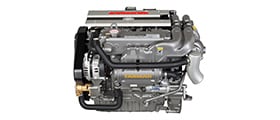 Recreational Marine
Recreational Marine
 Recreational Boat
Recreational Boat
 Premium Cruiser
Premium Cruiser
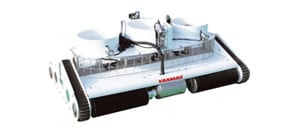 Marine Equipment
Marine Equipment
 Marine Commercial
Marine Commercial
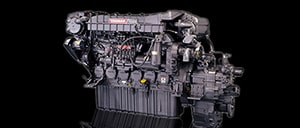 Propulsion Engines (High Speed)
Propulsion Engines (High Speed)
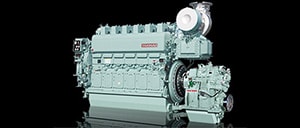 Propulsion Engines (Medium Speed)
Propulsion Engines (Medium Speed)
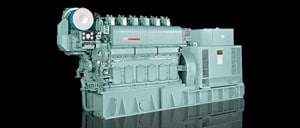 Auxiliary Engines
Auxiliary Engines
 SCR System
SCR System
 Dual Fuel Engine
Dual Fuel Engine
 Two-stage Turbocharging System
Two-stage Turbocharging System
 Electric Propulsion System
Electric Propulsion System
 Energy Systems
Energy Systems
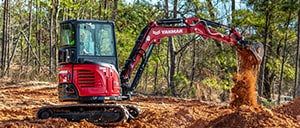 Compact Equipment
Compact Equipment
 Industrial Engine
Industrial Engine
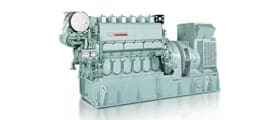 Power Generation
Power Generation
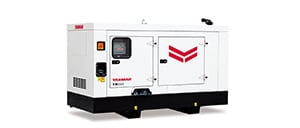 Compact Power Products
Compact Power Products